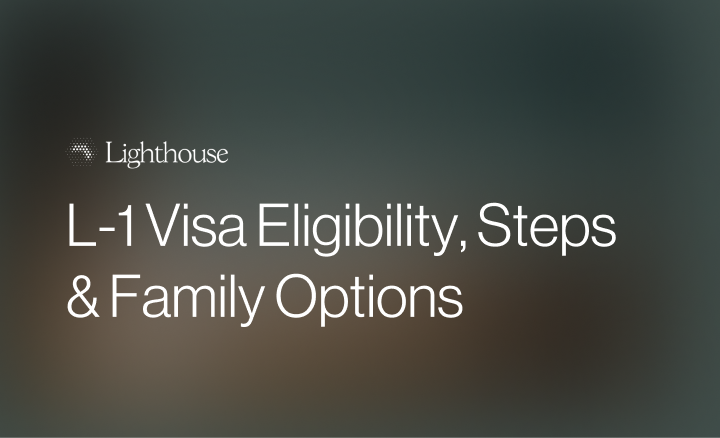Form I-9 Explained
Everything you need to know about Form I-9 for employment verification.


Every U.S. employer must verify that each new hire is legally authorized to work in the country. This guide explains what Form I-9 is, who completes it, and how to stay compliant with federal employment eligibility verification rules.
What is Form I-9
Form I-9, Employment Eligibility Verification, is a federal requirement under the Immigration Reform and Control Act of 1986. It confirms both an employee’s identity and their authorization to work in the United States. All U.S. employers must complete Form I-9 for every new employee hired after November 6, 1986, regardless of citizenship or immigration status.
The form is issued by USCIS (U.S. Citizenship and Immigration Services), part of the Department of Homeland Security (DHS). It ensures that U.S. employers hire only individuals who are authorized to work—either U.S. citizens, lawful permanent residents, or noncitizens with valid employment authorization.
Purpose and legal background
The Immigration and Nationality Act (INA) Section 274A requires employers to verify the identity and employment authorization of every person they hire. The Department of Homeland Security, through USCIS, oversees the I-9 process, while the Department of Justice’s Immigrant and Employee Rights Section enforces anti-discrimination provisions related to hiring and verification.
Employers must complete, retain, and make available their completed forms for inspection by authorized officials from DHS, the Department of Labor, or the Department of Justice. The form itself is not filed with USCIS or ICE (U.S. Immigration and Customs Enforcement) but must be stored for audit purposes.
Who must complete Form I-9
Every U.S. employer must complete Form I-9 for each new employee, including U.S. citizens, lawful permanent residents, and foreign nationals authorized to work. Independent contractors and casual domestic workers are not required to complete the form.
- Employees complete Section 1 on or before their first day of work for pay.
- Employers or authorized representatives complete Section 2 within three business days of the employee’s start date.
Remote employees can have their documents reviewed by an authorized representative, such as a notary or agent, if the employer cannot meet them in person.
How to complete Form I-9
Section 1: employee information and attestation
The new employee must fill out Section 1 no later than their first day of work. They provide personal details such as name, address, date of birth, and Social Security number (if applicable). They must also attest to their citizenship or immigration status by selecting one of four options:
- U.S. citizen
- Noncitizen national
- Lawful permanent resident (with Alien Registration Number or USCIS Number)
- Noncitizen authorized to work until a specified expiration date (for example, visa holders or individuals with an Employment Authorization Document)
Employees who need help completing Section 1 may use a preparer or translator. In that case, the preparer or translator must complete Supplement A.
Section 2: employer review and verification
The employer reviews the employee’s documents and completes Section 2 within three business days of the hire date. The employer must physically examine—or, if qualified, remotely examine—the employee’s documents to confirm they appear genuine and relate to the employee.
Employers record the document title, issuing authority, number, and expiration date. They then sign and date the form to certify that the documents reasonably appear authentic.
If the employer uses a DHS-authorized remote procedure under E-Verify, they must check the box in Section 2 to indicate remote examination. Employers must also retain clear copies of the documents reviewed.
Supplement B: reverification and rehires
Employers use Supplement B (formerly Section 3) to reverify employment authorization when an employee’s work authorization or Employment Authorization Document (EAD) expires. It is also used to document rehires within three years of the original hire date.
Permanent residents and U.S. citizens are not subject to reverification.
Acceptable documents for verification
Employees must present either one document from List A or one document each from List B and List C. These are known as the Lists of Acceptable Documents.
- List A (proves both identity and work authorization):
- U.S. passport or passport card
- Permanent Resident Card (Form I-551)
- Employment Authorization Document (Form I-766)
- Foreign passport with a valid work visa and Form I-94
- List B (proves identity):
- Driver’s license or state ID card
- School ID card with a photograph
- List C (proves work authorization):
- Social Security card
- Birth certificate issued by a U.S. state or territory
Employers must provide the Lists of Acceptable Documents to every new employee, either as a printed page or a link to the official USCIS list.
Electronic vs. paper I-9 compliance
Employers may complete Form I-9 on paper or through an electronic system that meets DHS standards. Electronic systems must maintain data integrity, include an audit trail, and allow printing of legible copies.
In August 2023, DHS introduced an optional alternative procedure for remote document examination. Employers enrolled in E-Verify and in good standing can verify documents remotely by reviewing copies and conducting a live video interaction with the employee. They must retain clear copies of the documents and check the box indicating remote verification.
Reverification, rehires, and retention
Employers must reverify employment authorization before the expiration date listed on the employee’s EAD or other temporary work authorization. They record this in Supplement B.
Retention rules are strict. Employers must keep each completed Form I-9 for three years after the date of hire or one year after employment ends, whichever is later. Forms may be stored on paper, microfilm, microfiche, or in an electronic system that meets DHS standards. When the retention period ends, the form must be securely destroyed.
For rehires within three years, employers may either complete a new Form I-9 or update the existing one in Supplement B.
Penalties for noncompliance
I-9 mistakes are costly. Failure to comply with I-9 requirements can result in civil or criminal penalties. ICE conducts I-9 audits to ensure compliance. Employers found with missing, incomplete, or incorrect forms may face fines that vary by year and violation type. Paperwork violations can reach several thousand dollars per form, and knowingly hiring or continuing to employ unauthorized workers can lead to higher penalties and potential criminal prosecution.
Form I-9 vs. E-Verify
Recent updates to Form I-9
The current version of Form I-9, dated August 1, 2023, includes a streamlined layout and new features:
- A single-page format for Sections 1 and 2
- Separate Supplement A and Supplement B pages
- Checkbox for remote document examination
- Updated Lists of Acceptable Documents
- QR code for easier digital access
Employers must use the correct version of the form, which is valid until May 31, 2027.
Lighthouse as a compliance partner
For employers hiring foreign nationals under work visas such as H-1B, O-1, or L-1, I-9 compliance connects directly with immigration sponsorship. Lighthouse helps employers and HR teams manage both sides of this process, ensuring that each sponsored worker’s employment authorization is properly documented and reverification dates are tracked.
Our platform supports document preparation aligned with USCIS standards, coordination with E-Verify where applicable, and reminders for reverification deadlines. This helps employers stay compliant while onboarding international talent efficiently.
Explore related guides:
Get started with Lighthouse today.
Frequently asked questions
Who must fill out Form I-9?
Every new employee hired in the U.S. after November 6, 1986, must complete Form I-9, including U.S. citizens and noncitizens authorized to work.
What is I-9 verification for visa holders?
Visa holders with work authorization, such as H-1B or O-1 employees, must complete Form I-9 like any other new hire. They present their passport, visa, and Form I-94 as acceptable documents.
Can the I-9 be completed electronically?
Yes. Employers may use electronic systems that meet DHS standards for security, audit trails, and retention.
How long must employers keep completed forms?
Keep each completed form for three years after the hire date or one year after employment ends, whichever is later.
What happens if an employee’s work authorization expires?
If an employee’s authorization expires, reverify their documents before the expiration date using Supplement B.
What is the difference between Form I-9 and E-Verify?
Form I-9 is mandatory for all employers. E-Verify is an online system that compares I-9 data with DHS and Social Security Administration records to confirm eligibility.
What happens during an I-9 audit?
ICE may issue a Notice of Inspection. Employers have at least three business days to produce their I-9 forms. Fines may apply for missing or incorrect forms.
Lighthouse provides expert guidance and legal review to strengthen your case.
From document prep to USCIS submission, Lighthouse ensures your petition meets every requirement.

%201.svg)


